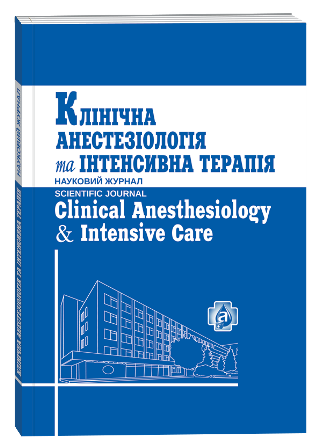RELIABILITY OF ASA ANESTHETIC RISK IN CLINICAL PRACTICE AS AN INDEPENDENT PREDICTOR OF MEDICAL COMPLICATIONS AND INTRA - AND POSTO PERATIVE MORTALIT Y
DOI:
https://doi.org/10.31379/2411.2616.14.2.4Keywords:
ASA, age, gender, anesthesiology risk.Abstract
Introduction. Calculated ASA risk for a particular patient cannot serve as a direct indicator of the operative risk, because (for example) the surgery risk for a high-risk patient undergoing cataract surgery with local anesthesia is completely different from the surgery risk for the same patient who is submited to an intervention on the heart. Severe diseases of the heart, liver, intestine or kidney, although they greatly affect of the physical condition of the patient, cannot be labeled as systemic disease. Local diseases may also change physical condition, but they were not mentioned in the ASA classification. Materials and methods. The study was conducted based on the analysis of information from the primary research sources regarding 1799 patients who were investigated retroactively, during the years 2008-2016 (for 108 months), in the Clinic of the Chair of anesthesiology-reanimatology no. 1 Valeriu Ghereg of the National Scientific-Practical Center of Urgent Medicine (Chisinau, Republic of Moldova). Results. The model has the following characteristics: Omnibus Tests of Model Coefficients χ² = 11,916 df = 2 p = 0.003 (the result is statistically significant), Nagelkerke R Square = 0.063, which means that chronic respiratory failure and age represent 6.3% of the variability in lethality at this category of patients, Hosmer and Lemeshow Test p> 0.05, these variables are of interest and can be used to construct the respective mathematical model. Conclusion. In the Republic of Moldova, the mortality rate of patients undergoing elective interventions on the femur is comparable with the world data, in the ASA II risk group the mortality is zero, and for the ASA III group – 3.5%. The particularities of the local study show the decreasing tendency of the lethality and the patients being younger.
References
M. Saklad. Grading of patients for surgical procedures / M. Saklad //Anesthesiology. – 1941. – Vol.2. – P.281–4.
Reliability of the American Society of Anesthesiologists physical status scale in clinical practice / A. Sankar [et al.] // British Journal of Anaesthesia. – 2014. – Vol.113 (3). – P.424–32.
C.J. Vacanti, R.J. VanHouten, R.C. Hill. A statistical analysis of the relationship of physical status to postoperative mortality in 68,388 cases / C.J. Vacanti, R.J.VanHouten, R.C. Hill // Anesth Analg. – 1970. – Vol.49. – P.564–6
A.K. Kable, R.W. Gibberd, A.D. Spigelman. Adverse events in surgical patients in Australia / A.K. Kable, R.W. Gibberd, A.D. Spiegelman // Int J Qual Health Care. – 2002. – Vol.14. – P.269-76.
The incidence and nature of surgical adverse events in Colorado and Utah in 1992 / A.A.Gawande [et al.] // Surgery. – 1999. – Vol.126. – P.66-75.
Impact of heart failure on patients undergoing major noncardiac surgery / B.G. Hammill [et al.] // Anesthesiology. – 2008. – Vol.108. – P.559.







